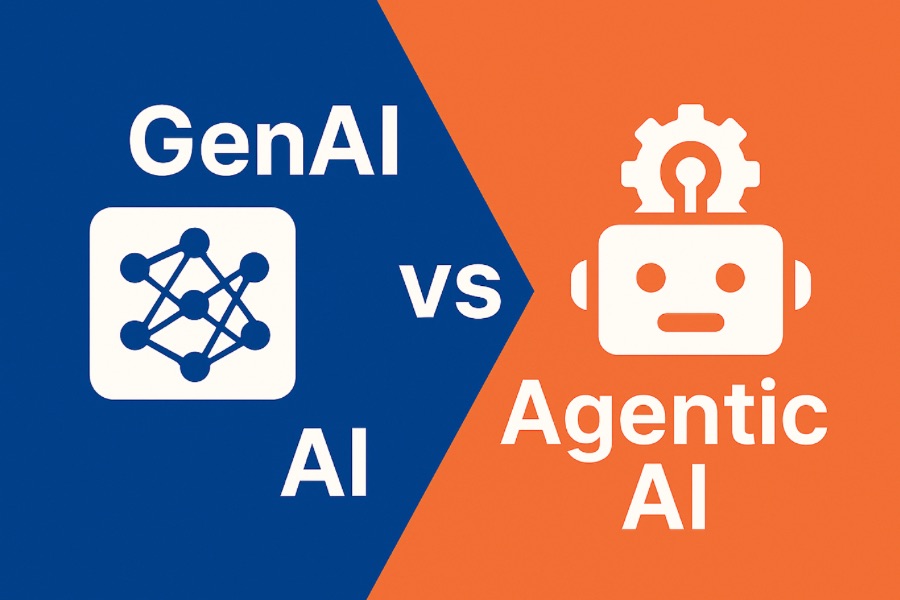47 Cybersecurity Tools for 2025 You Should Know
March 16, 2024, 29 min read
Today, protection is not only necessary for those with a lot to hide. Everyone’s privacy is just as important and with some simple tools they too can protect themselves. Cybersecurity tools act as our armor, defending against sneaky hackers. These tools block malicious software, identify system weaknesses, and keep watch for suspicious activity. By providing multiple layers of defense, cybersecurity tools safeguard sensitive information, prevent financial losses, and ensure peace of mind. Just like a locked door protects your home, these tools keep your data safe and secure.
What is a Cybersecurity Tool?
Think of a cybersecurity tool as the first line of defense that fortifies our information systems. They stand guard against the relentless forces of cyber threats. Whether in the form of hardware or software, these tools operate as vigilant protectors. They each have their unique role in defending the digital frontier.
Some tools act as impenetrable shields, much like a castle’s fortified walls. Firewalls and antivirus software filter out malicious intrusions, scrutinizing every piece of incoming traffic to block potential attackers before they can breach the perimeter.
Others take on the role of scouts, uncovering hidden vulnerabilities that could serve as entry points for cybercriminals. Security professionals deploy these tools to explore their systems, much like adventurers mapping out potential weaknesses in their defenses.
Meanwhile, monitoring tools are the watchtowers of the digital realm, constantly scanning the landscape for signs of unusual activity. When suspicious behavior arises, they sound the alarm, empowering security teams to act swiftly and decisively. Corporate cyber security training plays a crucial role in equipping teams with the skills needed to use these tools effectively, ensuring they can respond quickly and efficiently to potential threats.
Finally, encryption tools weave a cloak of invisibility around sensitive data. By transforming information into unreadable code, they ensure that even if stolen, the data remains an unsolvable puzzle, useless in the hands of thieves.
Together, these cybersecurity tools form a sophisticated and dynamic defense system, each component playing its part in safeguarding the integrity of our digital world.
List of Cybersecurity Tools
There are many different cybersecurity tools available, and the specific ones used will depend on the size and needs of the organization or individual. But ultimately, they all work together to form a shield around your digital presence.
Sprinto is a cloud-based compliance automation platform designed to help companies breeze through audits without the usual mess of spreadsheets, back-and-forth emails, and manual evidence gathering. Tailored for SaaS businesses and modern tech stacks, Sprinto maps compliance requirements (SOC 2, ISO 27001, GDPR, HIPAA, and more) directly onto your systems, providing real-time insight into your audit readiness.
What makes Sprinto stand out is its focus on continuous compliance, not just point-in-time certifications. It automatically monitors your internal controls across platforms like AWS, Google Workspace, GitHub, and Azure, identifying gaps and alerting you before they become audit issues. It’s also known for being auditor-friendly—Sprinto generates clean, exportable reports that streamline the review process and reduce the stress of audit prep. Plus, its pre-built policy templates and workflows mean you can go from zero to compliant much faster than traditional GRC platforms allow.
Quick Tip: Don’t wait until your audit date is looming. Sprinto is most effective when implemented early in your security roadmap. The automation will save you hours (if not weeks) in compliance overhead.
Splunk is an industry-leading platform for machine data analysis, used primarily for security information and event management (SIEM), log monitoring, and threat detection. It collects, indexes, and visualizes massive volumes of real-time and historical data from across your IT environment. Whether you’re running on-prem, hybrid, or fully cloud-native, Splunk helps make sense of all the noise by turning raw logs into actionable intelligence.
Splunk’s power lies in its scalability and flexibility. It can ingest data from virtually any source—servers, firewalls, cloud apps, IoT devices—and apply sophisticated search queries and correlation rules to detect anomalies, breaches, or compliance issues. Its visual dashboards and alerting capabilities make it invaluable for security operations centers (SOCs) and incident response teams.
Quick Tip: If you’re just getting started with Splunk, avoid diving headfirst into complex SPL (Search Processing Language) queries. Use the built-in visualizations and preconfigured security content to get your footing before going full analyst mode.
Nessus Professional, developed by Tenable, is one of the most widely trusted vulnerability assessment tools in the cybersecurity world. It’s designed for security professionals who need to identify, assess, and remediate vulnerabilities quickly across systems, devices, and applications. Nessus scans your infrastructure for thousands of known weaknesses—including misconfigurations, outdated software, and missing patches—delivering detailed, actionable reports.
What sets Nessus Pro apart is its deep vulnerability coverage and regularly updated plugin database, which detects over 75,000 known vulnerabilities. It’s fast, lightweight, and can scan everything from operating systems and network services to firewalls and virtual machines.
Quick Tip: Pair Nessus Pro with a centralized vulnerability management platform if you’re scanning large, dynamic environments. On its own, Nessus is a powerhouse—but when integrated into a broader workflow, its impact multiplies.
Teramind is an insider threat detection and employee monitoring platform that provides powerful visibility into user behavior across your organization. Designed for data loss prevention (DLP), user activity tracking, and behavior analytics, Teramind helps organizations proactively detect malicious intent, policy violations, and potential insider threats—before they become incidents.
Teramind goes beyond basic monitoring by offering intelligent behavior analytics and real-time alerts. It tracks keystrokes, emails, file transfers, app usage, and even on-screen activity, giving security teams granular insight into what users are doing.
Quick Tip: For compliance-sensitive environments (finance, healthcare, government), leverage Teramind’s privacy mode settings to anonymize data collection while still detecting threats. It’s a game-changer for balancing security with employee trust.
TotalAV Cyber Security is an all-in-one antivirus and system optimization platform aimed at both everyday users and small businesses looking for simple, effective protection. It covers core security needs—real-time antivirus, anti-phishing, ransomware protection, and device cleanup tools—without overcomplicating things. It’s built for users who want security out of the box with minimal setup.
TotalAV stands out for its clean interface, beginner-friendly experience, and wide device compatibility (Windows, macOS, Android, iOS). It includes a range of features typically found in more advanced suites, like a VPN, ad blocker, and system tune-up tools, all packed into one lightweight installer.
Quick Tip: Use the “Smart Scan” feature regularly—it combines malware detection, junk file cleanup, and tracking cookie removal in a single click, saving time and boosting system speed.
Norton LifeLock combines traditional antivirus protection with comprehensive identity theft protection, offering one of the most complete consumer-facing cybersecurity packages on the market. It’s designed for individuals and families who want to safeguard not just their devices, but also their digital identities, financial accounts, and personal information.
LifeLock stands out for its identity theft monitoring features, including credit score tracking, dark web surveillance, bank and credit account activity alerts, and even identity restoration assistance. Paired with Norton’s antivirus and VPN capabilities, it’s a full-spectrum security suite.
Quick Tip: Set up LifeLock’s alert preferences to your mobile device so you can react instantly if there’s suspicious activity on your bank accounts, credit reports, or social security number.
Defendify is a cybersecurity platform built specifically for small and midsize businesses (SMBs) that want enterprise-grade protection without needing an in-house security team. It offers an all-in-one solution that combines threat detection, risk assessments, policy management, and employee training into one streamlined platform.
Unlike standalone security tools, Defendify brings together multiple layers of protection—network scanning, vulnerability management, security awareness training, incident response planning, and compliance tracking. What makes it stand out is its modular, “build-your-own-stack” model. Businesses can start with essentials and scale up as they grow.
Quick Tip: Enable the built-in automated phishing simulation tool to regularly test and train employees against social engineering threats—it’s a low-effort, high-impact feature that helps reinforce a strong security culture.
Forcepoint is an advanced cybersecurity platform focused on behavior-centric data protection and secure access. It’s widely used by enterprises and government agencies for its ability to monitor and manage user behavior while enforcing strong data loss prevention (DLP) and zero trust principles across complex environments.
Forcepoint’s strength lies in its human-centric approach to cybersecurity. Rather than just reacting to threats, it analyzes user behavior patterns to detect anomalies before damage occurs. It offers robust DLP, insider threat detection, cloud access security broker (CASB) functionality, and zero trust network access (ZTNA) in one integrated solution.
Quick Tip: Use Forcepoint’s risk-adaptive protection to dynamically adjust access controls based on user behavior—so trusted users stay productive while suspicious behavior gets flagged or blocked automatically.
OSSEC (Open Source HIDS Security) is a powerful, open-source host-based intrusion detection system (HIDS) that focuses on real-time log analysis, file integrity checking, and rootkit detection. It’s a go-to solution for security teams that want deep visibility into system activity without the overhead of costly commercial tools.
As a lightweight yet flexible tool, OSSEC stands out in environments where monitoring multiple endpoints is critical. It supports a wide range of operating systems including Linux, Windows, and macOS, and integrates easily with SIEM platforms. Its real-time alerting and centralized management make it ideal for large-scale deployments.
Quick Tip: Pair OSSEC with a log management platform like Graylog or ELK Stack to visualize and analyze your alerts more effectively—this combo gives you both detection and digestible insight.
Bitwarden is a secure, open-source password manager trusted by individuals, teams, and enterprises alike. It simplifies credential management while offering strong encryption, cross-platform accessibility, and seamless collaboration features—all without locking users into a proprietary ecosystem.
Bitwarden stands out for its end-to-end encryption, transparent open-source codebase, and strong support for both personal and enterprise users. It allows organizations to securely share credentials across teams, enforce strong password policies, and integrate with identity providers like SSO and LDAP.
Quick Tip: Enable Bitwarden’s Password Health Reports to automatically flag reused, weak, or exposed passwords across your vault—an easy win for tightening organizational security.
ZAP, developed by the OWASP Foundation, is a free and open-source web application security scanner designed for both beginners and seasoned security pros. It’s one of the most widely used tools for finding security vulnerabilities in web apps during development and testing phases.
What makes ZAP special is its ease of use without compromising on power. It features automated scanners, passive and active scanning modes, and an intuitive UI—ideal for developers integrating security early in the DevSecOps pipeline. ZAP supports scriptable scans with powerful APIs and can detect issues like SQL injection, cross-site scripting (XSS), and misconfigurations. Because it’s backed by OWASP, it stays aligned with the latest web security standards and threats.
Quick Tip: Use ZAP in daemon mode for seamless integration into CI/CD pipelines—automating your web app scans without needing to manually launch the interface.
FortiSIEM is Fortinet’s unified security information and event management solution that brings together security monitoring, compliance reporting, and performance management in one platform. Designed for hybrid environments, FortiSIEM delivers deep visibility across on-premise, cloud, and virtual infrastructure—making it ideal for complex enterprise ecosystems.
FortiSIEM shines with its real-time analytics, built-in threat intelligence, and powerful automation capabilities. It leverages machine learning to detect anomalies and supports multi-tenancy, making it great for MSSPs and large organizations. Its tight integration with Fortinet’s broader security fabric means you get seamless orchestration with firewalls, endpoint protection, and network analytics.
Quick Tip: If you’re already in the Fortinet ecosystem, enabling cross-platform threat correlation in FortiSIEM can drastically reduce response time by automating alerts and remediations across devices.
Snort is an open-source network intrusion detection and prevention system (NIDS/NIPS) developed by Cisco. It analyzes network traffic in real-time to detect malicious activity, from buffer overflows and port scans to sophisticated exploits. Snort is widely regarded as one of the most trusted IDS tools in both enterprise and research environments.
Snort stands out for its powerful rule-based engine that lets users define complex traffic patterns for detection and prevention. It’s highly customizable, lightweight, and supports signature-, protocol-, and anomaly-based detection. With regular updates to its rule sets and strong community support, Snort remains an agile defense layer against evolving threats.
Quick Tip: Use PulledPork to automatically manage and update Snort’s rule sets, so your IDS is always armed with the latest threat signatures.
Metasploit is the go-to open-source penetration testing framework developed by Rapid7. It’s designed to simulate real-world cyberattacks so security professionals can uncover vulnerabilities before malicious actors do. With an expansive library of exploits and payloads, Metasploit empowers both red teamers and blue teamers to test defenses, validate fixes, and build better security protocols.
What makes Metasploit stand out is its modular architecture—offering thousands of pre-built exploits, payloads, and auxiliary modules. It supports automated scans, remote exploitation, and post-exploitation scripting across platforms.
Quick Tip: Try using Metasploit Pro if you’re in a corporate environment—it adds a slick GUI, reporting features, and streamlined workflows for team-based testing.
Kali Linux is a specialized Debian-based operating system built for cybersecurity professionals, ethical hackers, and penetration testers. Maintained by Offensive Security, it comes pre-loaded with over 600 tools covering everything from wireless attacks and reverse engineering to digital forensics and web app testing. It’s basically the Swiss Army knife of cybersecurity.
Kali’s biggest strength lies in its out-of-the-box readiness—you don’t need to waste time installing or configuring dozens of tools individually. It supports multiple platforms (bare metal, VM, cloud, ARM devices) and includes tools like Nmap, Burp Suite, John the Ripper, and Wireshark—all neatly packaged.
Quick Tip: Use Kali’s “Kali Undercover Mode” to make your screen look like Windows—perfect for flying under the radar in public environments or during live demos.
Nikto is an open-source web server scanner designed to identify vulnerabilities and misconfigurations in HTTP/S servers. It performs comprehensive checks for over 6,700 potentially dangerous files, outdated software, default configurations, and other security issues. While not stealthy, Nikto is fast, thorough, and easy to use—perfect for initial web vulnerability assessments.
Nikto excels in surface-level reconnaissance and is particularly useful in early-stage penetration testing. It detects issues like exposed admin panels, insecure cookies, outdated server versions, and CGI problems that might otherwise be missed.
Quick Tip: Pair Nikto with a more advanced tool like Burp Suite or OWASP ZAP for deeper analysis—it’s great for flagging problems, but not always great at explaining them.
John the Ripper (JtR) is one of the most widely-used password cracking tools in the cybersecurity world. Originally developed for Unix systems, it now supports dozens of hash types including MD5, SHA-1, bcrypt, and Windows LM hashes. Whether you’re conducting a penetration test or auditing your own organization’s password strength, John is your go-to for cracking weak credentials.
John’s power lies in its speed and flexibility. It combines dictionary attacks, brute force, and rule-based attacks in one engine, letting you customize your cracking strategy for efficiency. Its ability to auto-detect hash types and run hybrid attacks makes it effective for both common and obscure password formats. With its “Jumbo” version, it supports even more formats and integrates well with GPU acceleration for faster results.
Quick Tip: Want to supercharge John? Use it with a GPU and large, customized wordlists like rockyou.txt—you’ll dramatically cut down cracking time.
Nmap (Network Mapper) is a powerful open-source tool used for network discovery, security auditing, and vulnerability detection. It helps cybersecurity professionals map out entire networks, identify live hosts, open ports, running services, and even OS fingerprints—all with remarkable speed and flexibility. Whether you’re securing your own systems or performing reconnaissance on a target, Nmap is foundational.
Nmap stands out for its versatility and depth of insight. It supports a wide range of scanning techniques—TCP SYN scans, UDP scans, version detection, and scriptable interactions through the Nmap Scripting Engine (NSE).
Quick Tip: Use nmap -sC -sV to run default scripts and version detection in one go—perfect for rapid insights during initial assessments.
Aircrack-ng is a specialized suite of tools for auditing wireless network security. It focuses on capturing and analyzing packets from Wi-Fi networks, then cracking WEP and WPA/WPA2-PSK keys using advanced cryptographic attacks. Lightweight but powerful, Aircrack-ng is a staple in the toolkit of ethical hackers and penetration testers focused on wireless environments.
Aircrack-ng’s power lies in its laser-focus on Wi-Fi vulnerabilities. It enables packet injection, deauthentication attacks, handshake captures, and real-time packet analysis. Combined with a compatible wireless card in monitor mode, it can sniff out misconfigurations and weak encryption faster than most tools.
Quick Tip: Cracking WPA/WPA2 passwords? Capture the 4-way handshake first, then feed it into Aircrack-ng with a strong wordlist like rockyou.txt for the best results.
OpenVAS (Open Vulnerability Assessment Scanner) is a full-featured open-source vulnerability scanner used for detecting security issues across systems and networks. It’s part of the Greenbone Vulnerability Management (GVM) framework and supports extensive vulnerability tests that are updated regularly. OpenVAS is often chosen as a free alternative to enterprise-level vulnerability scanners, offering professional-grade depth without the price tag.
OpenVAS shines in comprehensive, regularly updated vulnerability detection. It supports a wide range of scan configurations—from targeted audits to full network assessments—and can detect misconfigurations, missing patches, and known CVEs across operating systems and applications.
Quick Tip: Before running scans, ensure your feed is up to date. Regularly syncing with the Greenbone Security Feed boosts detection accuracy and reduces false positives.
Security Onion is a powerful open-source Linux distribution for intrusion detection, enterprise security monitoring, and log management. Designed for blue teams and SOC analysts, it combines a wide array of tools—like Suricata, Zeek (formerly Bro), Wazuh, Elasticsearch, and Kibana—into a unified platform for detecting, analyzing, and responding to cyber threats in real time.
What makes Security Onion stand out is its all-in-one approach to threat detection and visibility. Instead of juggling multiple systems and configurations, analysts get a centralized hub for IDS alerts, PCAP inspection, endpoint monitoring, and log correlation.
Quick Tip: Spin up Security Onion in a virtual lab first—it’s resource-intensive, but once configured properly, it can replicate a production-grade SOC environment for both training and live defense.
tcpdump is a command-line packet analyzer that’s been a cornerstone of network diagnostics and security analysis for decades. It allows users to capture and inspect network traffic in real time, making it a fundamental tool for penetration testers, incident responders, and sysadmins. Despite its minimal interface, it’s incredibly powerful in the hands of someone who knows what to look for.
tcpdump is known for its speed, precision, and scriptability. It operates directly from the terminal, allowing users to filter traffic with fine-grained detail using Berkeley Packet Filter (BPF) syntax. Unlike GUI-based tools, tcpdump is lightweight and ideal for use in headless environments or when SSH’ed into remote machines.
Quick Tip: Use -w to write packets to a file for later analysis in Wireshark or -i any to monitor all interfaces at once—perfect for quick, stealthy checks on complex systems.
Nagios is a robust open-source IT infrastructure monitoring tool designed to track the health and performance of systems, networks, and applications. With its plugin-based architecture and flexible alerting system, Nagios has long been the go-to solution for system admins and security teams who need early warnings before small issues become big problems.
Nagios stands out for its modularity and scalability. It supports a vast library of community-developed plugins, allowing you to monitor virtually anything—from server CPU usage to website uptime and SSL certificate expirations.
Quick Tip: Pair Nagios with a tool like NRPE (Nagios Remote Plugin Executor) to monitor remote systems more effectively—and if the UI feels dated, try a modern frontend like Nagios XI or Thruk for improved usability.
Paros Proxy is a lightweight, open-source web application security assessment tool designed primarily for intercepting and modifying HTTP/HTTPS traffic between a client and a server. Though it’s not as actively maintained as modern tools, Paros played a foundational role in shaping web proxy-based testing workflows and is still used for learning or simple assessments.
Paros is known for its simplicity, low footprint, and effectiveness in detecting common web vulnerabilities like cross-site scripting (XSS), SQL injection, and authentication flaws. It features a built-in spider, scanner, and session analyzer, making it a solid choice for quickly understanding how a web app behaves.
Quick Tip: Paros can be especially helpful in constrained environments where GUI-heavy tools aren’t viable. For beginners, it’s a clean way to understand how man-in-the-middle proxies work without getting overwhelmed.
Mimecast is a cloud-based cybersecurity platform primarily focused on securing email communications—arguably the most exploited attack vector in the enterprise world. It provides comprehensive protection against phishing, malware, impersonation attacks, and data leaks, combining security, archiving, and continuity in one centralized solution.
Mimecast is particularly known for its targeted threat protection, which scans and filters inbound and outbound emails for malicious content, suspicious links, and advanced spoofing attempts. Its email continuity service ensures that employees can continue sending and receiving email even during outages.
Quick Tip: Use Mimecast’s awareness training tools alongside its email security services to build a more cyber-savvy workforce—and reduce the risk of human error in phishing incidents.
Wireshark is the world’s most widely used network protocol analyzer, trusted by cybersecurity professionals, network engineers, and system admins alike. It allows users to capture and inspect data packets in real time, offering deep visibility into what’s happening across a network—down to the byte.
Wireshark’s biggest strength lies in its granular packet-level analysis, supporting hundreds of protocols and file formats. It provides detailed insights into traffic flows, helping identify misconfigurations, unauthorized communications, suspicious payloads, or even malware callbacks.
Quick Tip: Set capture filters before starting a session to narrow down what you’re analyzing—this saves you from sifting through thousands of irrelevant packets after the fact.
KisMAC is a wireless network discovery and security tool designed specifically for macOS. While no longer under active development, it was once a go-to application for Wi-Fi reconnaissance and auditing. It supports passive network scanning, packet capturing, and basic cracking—making it a useful tool for Wi-Fi penetration testing back in its prime.
KisMAC stood out for its support of passive scanning, allowing users to detect hidden SSIDs and monitor wireless traffic without actively probing networks—essential for stealthy reconnaissance. It also included WEP and WPA key cracking tools, GPS mapping features, and Apple Airport card compatibility, making it a solid contender for Mac-based security testing when alternatives were scarce.
Quick Tip: If you’re working on modern wireless testing, check out Kismet instead—it’s actively maintained, cross-platform, and far more feature-rich for today’s Wi-Fi environments.
WebTitan is a robust DNS-based web content filtering and cybersecurity solution designed for businesses, MSPs, and educational institutions. It offers real-time protection against malicious websites, phishing attempts, and inappropriate content by blocking threats at the DNS level—before they ever reach the network or endpoint.
WebTitan excels in scalable, cloud-based filtering with granular control. It allows organizations to enforce browsing policies, monitor user activity, and prevent data breaches without complex setup. Its real-time threat intelligence engine continuously updates to block access to domains linked to malware, botnets, and fraud.
Quick Tip: Pair WebTitan with endpoint security tools to ensure a layered defense—filtering threats at the DNS level and catching anything that slips through locally.
SiteLock is a comprehensive website security platform that protects sites from malware, vulnerabilities, and cyberattacks. Tailored primarily for small to mid-sized businesses and e-commerce sites, SiteLock offers automatic malware scanning, vulnerability patching, web application firewall (WAF) protection, and DDoS mitigation—all in one package.
What makes SiteLock stand out is its proactive website scanning and auto-remediation. It doesn’t just alert you to malware—it can automatically remove it.
Quick Tip: If you’re running a WordPress or Magento site, SiteLock’s tailored packages and plugin integrations can help streamline setup and tighten your site’s defenses with minimal effort.
Cloudflare is a leading cloud-based security and performance platform that acts as a protective layer between your website and the internet. Originally known for its powerful content delivery network (CDN), Cloudflare now offers a comprehensive suite of cybersecurity tools—including DDoS protection, a web application firewall (WAF), secure DNS, zero trust access control, and bot management—all designed to keep websites fast, available, and secure.
Cloudflare’s edge lies in its global anycast network, which spans over 300 cities and blocks billions of cyber threats daily—at the edge, before they ever touch your server. Its Zero Trust platform is one of the most accessible and scalable options for securing users, applications, and devices without a traditional VPN.
Quick Tip: If you’re not ready for a full security overhaul, enabling Cloudflare’s “Under Attack” mode is a one-click way to protect your site from DDoS and malicious bots during suspicious traffic spikes.
Burp Suite is a powerful and widely trusted platform for web application security testing, developed by PortSwigger. Designed primarily for penetration testers and ethical hackers, Burp Suite allows users to intercept, inspect, and manipulate traffic between their browser and a target web app. It offers both a free Community Edition and a feature-rich Professional version, making it versatile for both learners and seasoned security professionals.
Burp Suite excels in manual and automated vulnerability discovery, especially for web-based threats like SQL injection, XSS, CSRF, and logic flaws. Its Proxy module lets users capture and modify HTTP/S requests in real time, while the Scanner (Pro version) automates vulnerability detection with high accuracy.
Quick Tip: Pair Burp Suite with browser add-ons like FoxyProxy to quickly switch between normal and proxy-enabled sessions—perfect for testing without constantly reconfiguring your browser.
Ghidra is a free, open-source software reverse engineering (SRE) suite developed by the U.S. National Security Agency (NSA). It provides a comprehensive set of tools for analyzing compiled code on a variety of platforms, including Windows, macOS, and Linux. Despite its government roots, Ghidra has become a go-to tool for malware analysts, vulnerability researchers, and cybersecurity engineers thanks to its advanced decompilation capabilities and active open-source development.
Ghidra stands out for its built-in decompiler, which translates machine code into a more human-readable format, helping analysts understand binary files without source code. Its modular architecture supports scripting (in Java or Python), batch analysis, and collaborative reverse engineering.
Quick Tip: Use Ghidra’s scripting capabilities to automate repetitive analysis tasks—perfect for scaling your malware research or building custom plugins to enhance functionality.
Maltego is a powerful open-source intelligence (OSINT) and graphical link analysis tool designed for mapping relationships between people, groups, domains, IPs, social media profiles, and other digital footprints. Popular among cybersecurity professionals, digital forensics experts, and investigators, Maltego excels at turning raw data into visual insights through its intuitive graph-based interface.
What sets Maltego apart is its ability to aggregate and correlate disparate data sources into a unified, interactive graph. It leverages “transforms”—automated queries to various databases and APIs—that can trace entities across the surface web, deep web, and other datasets.
Quick Tip: Start with the free Community Edition to learn the ropes, then scale up to the commercial versions as your investigations become more complex and data-intensive.
VeraCrypt is an open-source disk encryption software designed to secure data through strong encryption algorithms and full-disk or partition-level protection. As the spiritual successor to TrueCrypt, VeraCrypt fixes many of its predecessor’s vulnerabilities while remaining user-friendly and effective for both personal and enterprise-level data protection needs.
VeraCrypt stands out for its on-the-fly encryption and hidden volumes feature, which allows users to create decoy systems and plausible deniability setups—ideal for high-risk environments. It supports strong encryption standards like AES, Serpent, and Twofish (or combinations of them), and can encrypt everything from USBs to entire system drives. It’s also cross-platform, supporting Windows, macOS, and Linux.
Quick Tip: Use the “hidden volume” feature to create a secure fallback if you’re ever forced to reveal a password—this added layer of deception can be a lifesaver in sensitive scenarios.
SolarWinds offers a suite of IT management and cybersecurity tools known for their scalability, visibility, and deep network insights. While the company provides a wide range of IT solutions, its security-focused tools—like Security Event Manager (SEM)—are designed to help organizations detect threats, automate compliance reporting, and respond to incidents swiftly.
SolarWinds shines in environments where network monitoring and security operations need to work hand in hand. Its SEM tool combines real-time log analysis with automated responses, making it ideal for SOCs (Security Operations Centers) looking to streamline threat detection.
Quick Tip: Pair SEM with SolarWinds Network Performance Monitor to get a holistic view of both security threats and overall network health from a single pane of glass.
TheHive is an open-source Security Incident Response Platform (SIRP) built for collaboration, speed, and automation. Designed with SOCs, CSIRTs, and CERTs in mind, it allows teams to investigate and respond to incidents in a structured, scalable way. It’s a favorite among organizations that want enterprise-grade incident handling without vendor lock-in or steep licensing costs.
What sets TheHive apart is its deep integration with MISP (Malware Information Sharing Platform) and its support for playbook-driven workflows. Analysts can turn alerts into cases, assign tasks, and manage investigations across large teams without losing track of context.
Quick Tip: TheHive thrives when paired with Cortex and MISP. Set them up as a triad for a budget-friendly, fully operational threat intelligence and incident response pipeline.
IBM QRadar is a powerful, enterprise-grade Security Information and Event Management (SIEM) platform designed to help security teams detect, prioritize, and respond to threats in real time. It collects and analyzes vast amounts of log data, network flows, and events from across your infrastructure, giving you centralized visibility and actionable insights. It’s widely used by large organizations for its advanced analytics, compliance support, and scalability.
QRadar stands out for its robust correlation engine that links seemingly unrelated events to reveal potential threats, drastically reducing alert fatigue. It also features behavioral analytics, threat intelligence integration, and automated offense prioritization, making it a go-to solution for SOCs needing rapid and precise incident detection.
Quick Tip: Use QRadar’s built-in rules editor to customize correlation rules to match your organization’s specific threat landscape—fine-tuning alerting can dramatically reduce noise and sharpen your detection accuracy.
Snorby is a sleek, user-friendly front-end interface for managing and visualizing Snort IDS alerts. Designed to make intrusion detection more accessible, Snorby offers a clean, intuitive dashboard that transforms complex raw alerts into easily digestible visual summaries. It’s best suited for teams that already use Snort but want better visibility, alert management, and reporting capabilities.
Snorby excels in streamlined alert classification and case management, letting users categorize, comment on, and follow up on IDS events. Its integration with Snort allows for real-time event monitoring, while its search, tagging, and email notification features boost investigative workflows. The interface also supports role-based access controls and customizable widgets for SOC teams.
Quick Tip: Pair Snorby with Barnyard2 and a properly tuned Snort configuration to unlock its full potential—this combo ensures smooth data parsing and more accurate, actionable insights on your dashboard.
CrowdStrike Falcon is a leading cloud-native endpoint protection platform that combines next-gen antivirus, EDR (Endpoint Detection and Response), and threat intelligence into a single lightweight agent. Designed for speed and scalability, Falcon helps organizations detect, prevent, and respond to breaches in real-time—without bogging down system performance.
Falcon’s standout feature is its cloud-based architecture, which allows for instant deployment and real-time threat detection across thousands of endpoints. It uses AI-powered behavioral analytics to identify and stop attacks before they escalate, including zero-day threats and ransomware.
Quick Tip: Take advantage of Falcon’s “OverWatch” managed threat hunting add-on if your team lacks in-house analysts—it’s like having a 24/7 elite cybersecurity team on standby.
Sophos Intercept X Advanced is a comprehensive endpoint security solution that merges traditional antivirus with cutting-edge technologies like deep learning, anti-ransomware, exploit prevention, and active adversary protection. It’s designed to stop the broadest range of threats, even those that have never been seen before.
Intercept X shines through its deep learning neural network, which allows it to detect malware without relying on signatures. It includes CryptoGuard technology that rolls back ransomware attacks by restoring encrypted files, and Exploit Prevention that blocks techniques used in zero-day exploits.
Quick Tip: Pair Intercept X with Sophos Central to manage policies and monitor alerts across all endpoints, firewalls, and mobile devices from one clean dashboard. Great for small teams juggling too many tools.
Trend Micro Cloud One is a powerful cloud security services platform designed to protect workloads, containers, file storage, APIs, and more across cloud environments. Built for DevOps and security teams alike, it offers a unified suite of services that seamlessly integrates with AWS, Azure, GCP, and Kubernetes environments.
Cloud One excels in workload security, using behavioral analysis and virtual patching to protect instances without requiring constant updates. It supports container image scanning during the CI/CD pipeline and offers File Storage Security to monitor malicious files in object storage like Amazon S3.
Quick Tip: Use Cloud One’s native integrations with IaC (Infrastructure as Code) tools to catch misconfigurations before deployment—think of it as DevSecOps without the chaos.
Webroot Business Endpoint Protection is a cloud-based cybersecurity solution tailored for small to mid-sized businesses that need lightweight, fast, and effective defense without the overhead of traditional antivirus suites. Powered by real-time threat intelligence and behavioral heuristics, it secures endpoints with minimal system impact and fast deployment times.
Webroot stands out for its lightweight agent, which installs in seconds and runs efficiently in the background—ideal for businesses with limited IT resources.
Quick Tip: Pair Webroot with an RMM (Remote Monitoring and Management) tool to streamline endpoint deployment and policy control across multiple client environments.
Magnet AXIOM Cyber is an advanced digital forensics and incident response platform developed for deep investigative capabilities. It allows security professionals to collect, analyze, and report digital evidence across endpoints, cloud services, email, and mobile devices—all from a single workspace. Ideal for incident responders and forensic experts, AXIOM Cyber delivers granular visibility into file systems and user activities to support thorough investigations.
AXIOM Cyber excels with its comprehensive data collection framework, pulling evidence from a wide range of sources—including RAM, swap files, cloud storage (e.g., Google Drive, OneDrive), and email archives. Its integrated timeline and artifact analysis tools help streamline the reconstruction of attack sequences, while automated artifact carving and keyword searches speed up data triage.
Quick Tip: Before launching a full AXIOM scan, use Magnet’s AXIOM Cyber Collector for a remote and lightweight triage to identify affected devices quickly and prioritize your investigation efforts.
Prelude Detect is an advanced hybrid intrusion detection system (IDS) designed to bring together the power of multiple detection engines—like Snort, Suricata, and OSSEC—under one centralized system. It’s built for organizations that need a scalable, open-source solution to manage a wide range of alerts from both network and host-based sources. With a focus on flexibility and correlation, Prelude offers a clear view into your security posture from a single pane of glass.
What makes Prelude Detect stand out is its ability to normalize and aggregate security alerts from various engines, creating a more accurate and context-rich view of threats. It also allows security teams to correlate events across different sources, making it easier to detect complex attacks that might go unnoticed in a siloed setup.
Quick Tip: Use Prelude’s correlation capabilities to connect host-based and network-based alerts—this helps detect multi-layered attacks more effectively and reduces noise from false positives.
Varonis for Active Directory is a cybersecurity platform tailored to secure, monitor, and manage your AD environments. It’s built for Windows-based enterprises that rely on the Active Directory ecosystem, offering insights into account activity, permission changes, and potential misconfigurations.
Varonis excels at detecting unsafe AD practices—like excessive privilege escalations, stale or dormant accounts, and unusual login patterns. Its behavioral analytics engine establishes a risk baseline and alerts on deviations in real time. With automated remediation workflows, it helps security teams reduce attack surfaces by enforcing least-privilege access and cleaning up leftover permissions.
Quick Tip: Start with Varonis’ Data Risk Assessment to map user permissions and highlight privileged accounts—then prioritize cleanup based on high-risk targets first for quick wins in reducing attack surface.
Acunetix is a web application security scanner that helps businesses identify and fix vulnerabilities in their online programs. This is important because even a small coding error can leave a website open to attacks, potentially allowing hackers to steal data or take control of the server itself. This tool uses a combination of automated and manual testing tools to give security analysts a complete picture of their web application’s health. This can save businesses time and money by pinpointing threats early on, before they can be exploited by attackers.
BluVector is a cybersecurity tool designed to give organizations a powerful shield against modern threats. It uses artificial intelligence and machine learning to detect and respond to attacks in real-time, including those that are new and haven’t been seen before (zero-day attacks). This allows security teams to not only identify threats but also prioritize them and take action to prevent breaches. This tool goes beyond just detection by providing broader network visibility, giving security teams a clearer picture of what’s happening on their systems. This translates to increased efficiency and productivity for security professionals.
How To Choose Cybersecurity Tools?
Choosing the right cybersecurity tools is like picking the perfect lock for your door – it depends on your specific needs and threats. Here’s a breakdown to help you navigate the selection process:
1. Assess Your Risks and Needs:
- What kind of data do you store? (financial information, customer data etc.)
- What are your biggest security concerns? (data breaches, malware attacks etc.)
- What is your budget for cybersecurity?
2. Prioritize and Choose Tools:
- Basic Needs: Every system needs essentials like anti-virus, firewalls, and encryption software.
- Targeted Protection: Depending on your risks, consider intrusion detection systems or web vulnerability scanners.
- Compliance Requirements: Some industries have regulations dictating what security tools you need.
3. Evaluate Tools Based on:
- Features and Functionality: Does the tool address your specific needs?
- Performance and Scalability: Can it handle your workload and grow with your business?
- Integration and Compatibility: Does it work well with your existing systems?
- Ease of Use: How easy is it for your team to learn and implement?
4. Additional Tips:
- Free vs Paid: There are good free options, but paid tools often have more features and better support.
- Vendor Reputation: Research the company’s track record and customer reviews.
- Stay Updated: The cyber threat landscape is constantly evolving, so choose tools with regular updates.
Highlights of Cybersecurity Tools
Preventative Tools
These tools act as a shield, filtering incoming traffic and blocking malicious attacks. Examples include:
- Firewalls: These enforce security policies at network gateways, filtering incoming and outgoing traffic based on predefined security rules.
- Anti-virus software: These programs constantly scan for and neutralize malware (malicious software) like viruses, worms, and trojan horses that can infect devices and steal data.
- Intrusion Detection and Prevention Systems (IDS/IPS): These tools constantly monitor network traffic for suspicious activity and can take actions to block or contain threats.
Detective Tools
These tools help identify weaknesses that hackers could exploit. Examples include:
- Vulnerability scanners: These tools scan systems for known weaknesses in software, firmware, and configurations.
- Penetration testing: Ethical hackers simulate cyberattacks to identify vulnerabilities in a system’s defenses.
Protective Tools
These tools safeguard data even if it is stolen
- Encryption: Encryption tools scramble data into an unreadable format, making it useless even if stolen.
- Data Loss Prevention (DLP): DLP is a security technology that helps to prevent the unauthorized disclosure of sensitive data. DLP systems can be used to monitor data traffic and identify attempts to transfer sensitive data outside of the organization.
Trends to Watch and Prepare For in Cyber Security Tools
Now that we have covered the already-existing tools in cyber security, we can safely dive into what awaits us in the future. Here’s a sneak peek into the trends shaping the next generation of cybersecurity tools:
- 1. AI-Powered Defenses: Artificial Intelligence isn’t just for chatbots or quirky art generators—it’s revolutionizing cybersecurity. Think automated threat detection, real-time analysis of billions of data points, and smarter systems that can predict attacks before they happen. The best part? These tools are learning all the time, so they’re always a step ahead of cyber baddies.
- 2. Quantum Encryption: If you thought quantum computing was just theoretical, think again. Quantum encryption tools are making it nearly impossible for hackers to break in, thanks to uncrackable keys. It’s like locking your digital assets in a vault that exists in another dimension.
- 3. Zero-Trust Architecture: “Trust no one” isn’t just a thriller tagline anymore; it’s the future of cybersecurity. Zero-trust tools ensure every single access request is verified, whether it’s from your colleague in the next cubicle or a service you use every day. Suspicious behavior? Denied.
- 4. Blockchain Security: Blockchain isn’t just for crypto enthusiasts—it’s making waves in cybersecurity, too. Its decentralized nature means data is more secure and tamper-proof. Expect to see tools leveraging blockchain for things like identity management and secure transactions.
- 5. Personalized Threat Intelligence: Cybersecurity tools are getting to know you better than your best friend. Using behavior analytics, these tools customize security protocols based on your unique patterns. It’s like having a digital bodyguard who knows your every move.
The bottom line? The future of cybersecurity tools is all about being smarter, faster, and one step ahead. It’s an exciting (and a little intimidating) time, but with these trends, your digital world might just become a fortress. Stay curious and keep your toolkit ready—because the cyber future is now!
Conclusion
The evolving cyber landscape demands a multi-layered approach to security. By incorporating a strategic mix of the tools mentioned here, you can address vulnerabilities, identify threats, and effectively respond to incidents. Remember, staying informed about the latest threats and tailoring your defenses accordingly is key. Don’t be afraid to seek professional help for complex security needs. With vigilance and the right tools, you can build a robust cybersecurity posture that protects your valuable data and systems.




























